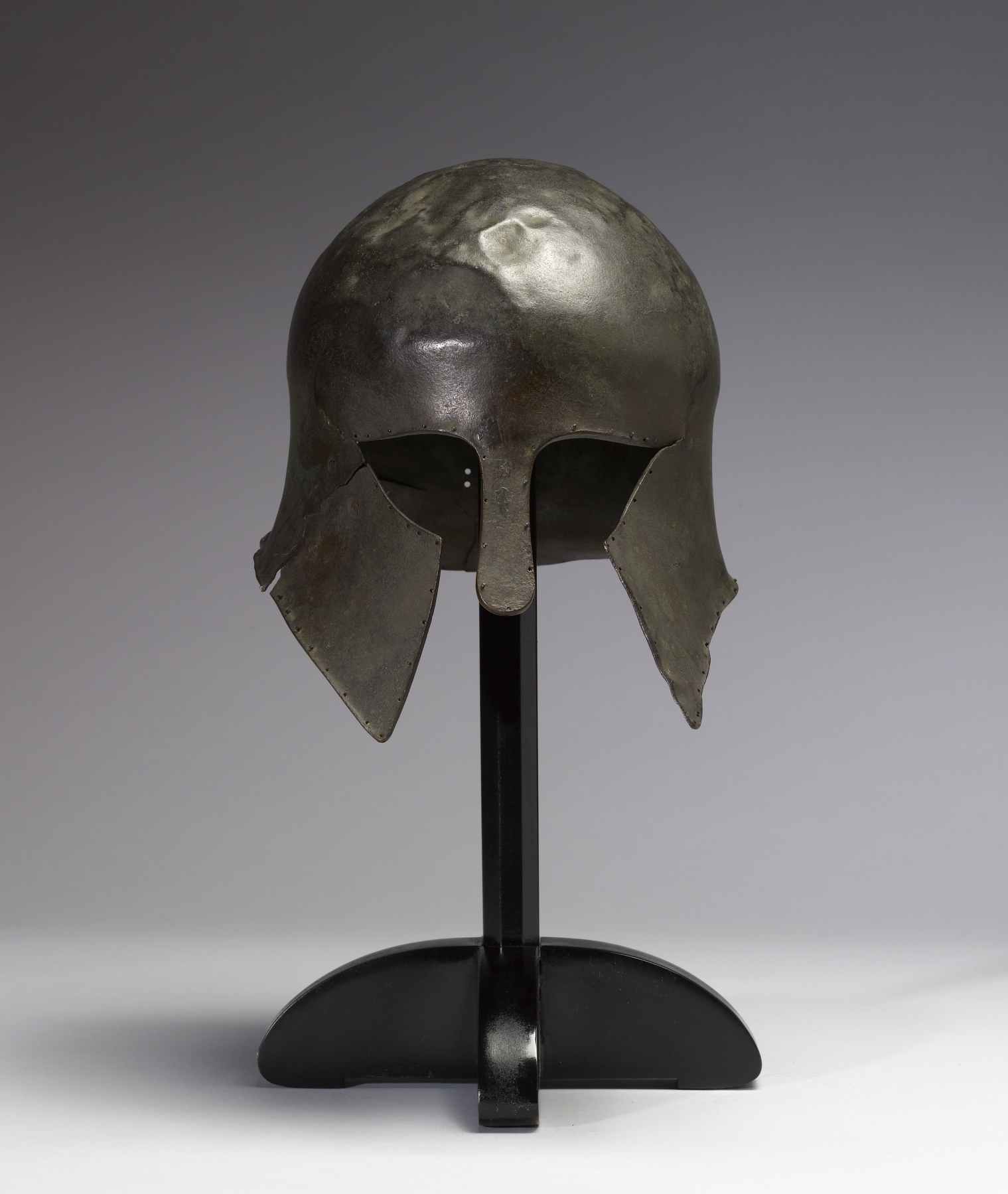Corinthian Helmet
This piece of armor is an element of the hoplite's panoply, which also included a breastplate, greaves, shield, spear, and sword. The nose-guard and cheekpieces of the undecorated, crestless Corinthian helmet left only the eyes and mouth of its wearer exposed. The small holes around the edge of the helmet anchored a leather lining that would have been sewn inside the helmet. This was the most common form of helmet among hoplites.
This helmet may have been "killed," or rendered unusable, by bending the cheekpieces outward. This type of distortion is common among helmets dedicated in sanctuaries.
Provenance
Provenance (from the French provenir, 'to come from/forth') is the chronology of the ownership, custody, or location of a historical object. Learn more about provenance at the Walters.
Mr. E. Segredakis, New York, New York [date and mode of acquisition unknown]; Walters Art Museum, January 15, 1946, by purchase.
Exhibitions
| 2009-2011 | Heroes: Mortals and Myths in Ancient Greece. The Walters Art Museum, Baltimore; Frist Center for the Visual Arts, Nashville; San Diego Museum Of Art, San Diego; Alexander S. Onassis Public Benefit Foundation (USA), New York. |
Geographies
Greece, Corinth (Place of Origin)
Measurements
H: 9 9/16 x W: 8 3/16 x D: 10 1/8 in. (24.3 x 20.8 x 25.7 cm)
Credit Line
Museum purchase with funds provided by the S. & A.P. Fund, 1946
Location in Museum
Accession Number
In libraries, galleries, museums, and archives, an accession number is a unique identifier assigned to each object in the collection.
In libraries, galleries, museums, and archives, an accession number is a unique identifier assigned to each object in the collection.
54.2304







